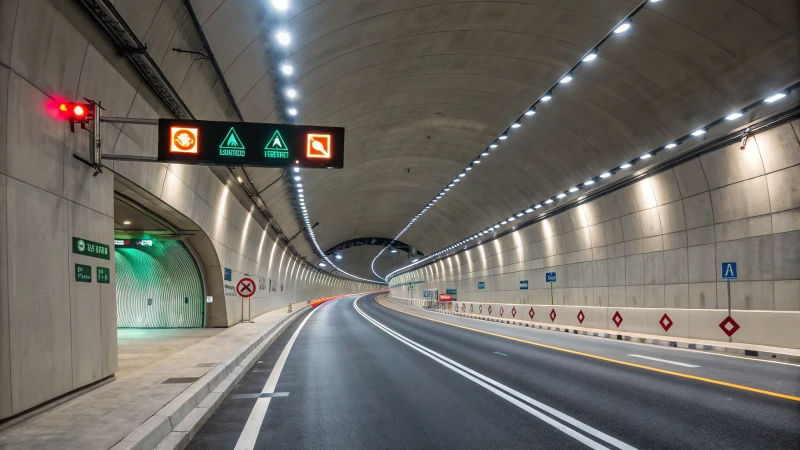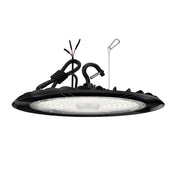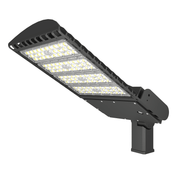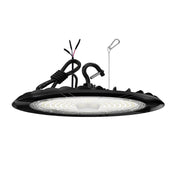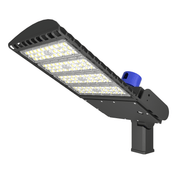This article introduces the energy-saving principle of LED area (street) lights in detail. I will start from its luminescence mechanism, energy conversion efficiency, intelligent control, energy saving, etc., and combine the existing product performance knowledge to deeply analyze the technical logic behind it.
- Energy-saving principle of LED area (street) lights?
- How is energy saving achieved by intelligent control?
- FAQs about LED area (street lights)?
-
Conclusion
Energy-saving principle of LED area (street) lights?
The reason why LED area (street) lights can achieve high efficiency and energy saving is closely related to their unique luminescence mechanism and technical characteristics. The specific energy-saving principle is as follows:
Unique luminescence mechanism: LED (light-emitting diode) is a semiconductor device whose luminescence is based on the principle of releasing energy by the recombination of electrons and holes. Inside the LED, when a forward voltage is applied, electrons jump from the conduction band of the semiconductor to the valence band and recombine with holes. The excess energy is released in the form of photons, directly converting electrical energy into light energy. Unlike traditional incandescent lamps that emit light by heating the filament (most of the electrical energy is converted into heat energy, and only a small amount is converted into light energy), and high-pressure sodium lamps that emit light by gas discharge (there is a lot of energy loss), the LED light-emitting process does not require heating, which reduces a lot of energy consumption, thereby improving the conversion efficiency of electrical energy to light energy.
High light efficiency characteristics: The light efficiency of LED area (street) lights is much higher than that of traditional lamps. Light efficiency refers to the efficiency of the light source in converting electrical energy into visible light, usually measured in lumens/watt (lm/W). The light efficiency of ordinary high-pressure sodium lamps is generally 80-120lm/W, while the light efficiency of high-quality LED area (street) lamps can reach 150-200lm/W or even higher. This means that LED area (street) lights consume less electricity when outputting the same brightness. For example, to achieve the same lighting brightness, a 100W LED area (street) light may be equivalent to a 250W or even higher power high-pressure sodium lamp, thereby achieving significant energy savings.
Intelligent control energy saving: Modern LED area (street) lights are often equipped with intelligent control systems to further improve energy saving. By installing ambient light sensors, infrared sensors, or microwave sensors, lamps can sense the light intensity, traffic flow, or human activity in the surrounding environment in real time. When the ambient light is sufficient or there are no vehicles or pedestrians in the area, the lamps automatically reduce the brightness; when a vehicle enters or a person approaches, the lamps quickly return to normal brightness to achieve "on-demand lighting". This intelligent dimming function avoids the lamps running at full power when it is not necessary, reduces energy waste, and significantly reduces energy consumption while ensuring lighting needs.
How is energy saving achieved by intelligent control?
The realization of intelligent control energy saving on LED area (street) lights relies on the coordinated operation of sensors, intelligent control systems and communication technologies. I will combine the intelligent control related content in the above FAQ to deeply dismantle the specific path of its realization.
Intelligent control energy saving of LED area (street) lights is mainly achieved through the following aspects:
Sensors perceive environmental changes: Installing various sensors on lamps is the basis for realizing intelligent control and energy saving. Ambient light sensors can monitor the light intensity of the surrounding environment in real time. For example, when there is sufficient light during the day, even during busy traffic hours, the lamps can automatically reduce the brightness or remain off according to the feedback from the ambient light sensors to avoid unnecessary energy consumption; infrared sensors and microwave sensors are used to detect the activities of vehicles and pedestrians. When a vehicle is detected to be driving in or a pedestrian is approaching, the sensor will quickly transmit the signal to the control system, and the lamp will immediately return to normal brightness. When the vehicle or pedestrian leaves, the lamp will automatically dim its brightness after a set delay time.
Intelligent control system decision-making and adjustment: The intelligent control system is the core "brain". After receiving the signal from the sensor, it analyzes and processes it according to the preset program and algorithm. For example, according to different periods and different traffic flow patterns (peak, flat, low peak), the control system will automatically adjust the brightness level of the lamp. During the night period with less traffic, the system will adjust the brightness of the lamp to a lower level, which can not only meet basic lighting needs but also save energy to the greatest extent; during rush hour, the system will increase the brightness of the lamp to ensure road safety. In addition, the intelligent control system can also centrally manage multiple lamps, coordinate the working status of each lamp according to the overall situation in the area, and achieve optimal energy allocation.
Communication technology realizes remote monitoring and management: With the help of IoT communication technology, such as Wi-Fi, Bluetooth, Zigbee, NB-IoT, etc., managers can grasp the working status of lamps in real time through remote monitoring platforms such as mobile phone APP and computer software, including the brightness, switch status, energy consumption data, etc. of lamps. If a lamp is found to be faulty or abnormal, maintenance can be arranged in time to avoid insufficient lighting or energy waste due to lamp failure. At the same time, the remote monitoring platform also supports remote setting of lamp parameters, such as adjusting brightness thresholds, modifying dimming strategies, etc., which is convenient for flexible adjustment of energy-saving plans according to actual needs, and further improves energy-saving effects and management efficiency.
FAQs about LED area (street lights)?
🔧 I. Abnormal lighting problems
Q: Street lights flicker or turn on and off?
Cause: Aging of the driving power supply (failure of capacitors and resistors), input voltage fluctuations, poor line contact, or oxidation of the terminal.
Solution:
Replace the driving power supply module, preferably a high-temperature resistant model.
Tighten the line connector and remove the terminal oxide layer (conductive paste is recommended).
Install a voltage stabilizer (for areas with power grid fluctuations).
Q: Is the light brightness insufficient or partially dimmed?
Cause: Aging of the lamp beads (luminous efficiency attenuation), dust accumulation on the surface affecting light transmission, and damage to a single lamp bead, causing the series circuit to be interrupted.
Solution:
Clean the light shield and reflector of the lamp at least twice a year.
Use a multimeter to detect damaged lamp beads and replace lamp beads of the same specification or the entire lamp module.
Q: The street light is completely off?
Troubleshooting steps:
① Check the power supply status of the distribution box (voltage/switch);
② Test the circuit continuity (focus on checking the damaged points caused by rat bites);
③ Confirm whether the driver output is normal (replace the driver if there is no output);
④ Check whether the lamp bead PCB board is burned.
🎨 II. Optical performance issues
Q: Abnormal light color (yellowish/bluish)?
Cause: Aging of LED chips leads to color drift, RGB mixed light driver parameter error, or monochrome lamp bead failure.
Solution:
Recalibrate the color temperature parameters through the control software.
Replace the aging lamp bead module (blackened or cracked lamp beads need to be replaced as a whole set).
🌧️ III. Environmental adaptability failure
Q: Do street lights fail after rain and snow?
Key points:
Verify the waterproof level (IP65 is the minimum requirement, IP67 is required in humid areas);
Check whether the sealing rubber ring of the junction box is aging.
Check the problem of water accumulation in the cable well at the bottom of the lamp pole.
Q: Is the light unstable under high temperatures in summer?
The main reason: Poor heat dissipation of the driver causes the overheating protection to start.
Optimization plan:
Clean the dust and obstructions from the radiator;
Add an auxiliary cooling fan (required when the ambient temperature is >45℃).

